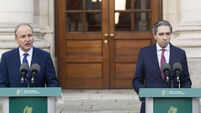Irish Examiner view: Local culture and arts under digital fire

This Friday, anyone from Adrigole, in West Cork, to Ardara, in Co Donegal, and much further afield, can, if they wish and have an adequate broadband signal, watch the Disney+ “global premiere” of the Broadway musical, and Pulitzer Prize and Tony Award winner, .
From a Friday-night-on-the-couch perspective, this may seem worthy of a modest cheer, but it underlines again how technology is leap-frogging geography and threatening the viability of local theatres, cinemas, performers, and artists.
The Covid-19 lockdown brought that reality home in a hard way for many professional artists, too.
Musicians, actors, and even a few magicians took to the internet in the early stages of the lockdown to try to lift spirits from afar.
They did so generously, but they were entertaining for free, working for nothing. Their enthusiasm, naturally, waned as one summer booking after another fell victim to social-distancing obligations.
An income, any income, became a priority. So much so that many online performances, from either a front room or a garage, now end with an if-you-don’t-mind reference to a ‘tip box’. Professionals made supplicants.
As the newspaper and television sectors discovered to their cost, this process seems irreversible.
It is also true that an audience grown accustomed to free access, or pay-to-view access for material not ordinarily available, quickly loses the habit of paying for performance or enjoying local performances as fully as before.
The huge change in how recorded music is consumed testifies to this, even if musicians are disadvantaged. Just as Amazon dominates retailing, streaming services are concentrating the sources of entertainment and art. Museums, too.
This may be convenient next Friday night, but in the longer term, it’s a threat to local, even national, performers, and local and national cultures.
It would be unwise to shrug this off as a good-old-days Luddite argument, as that is what has happened in television, newspapers, and to a growing proportion of the retail industry.
is about how the US’s founding fathers imagined their country’s future.
We are at a similarly challenging point. A new kind of conviction and determination will be needed to ensure technology works for us, not the other way around.
We are not, at this moment, winning that battle.













